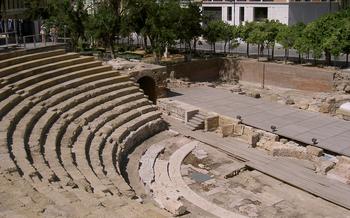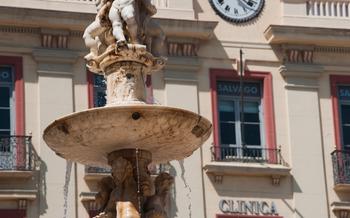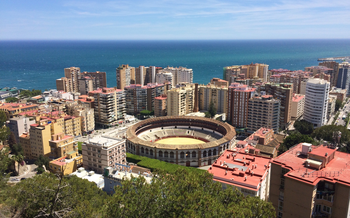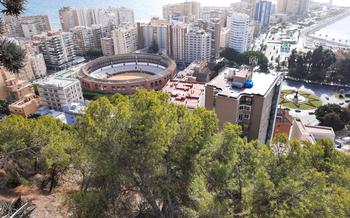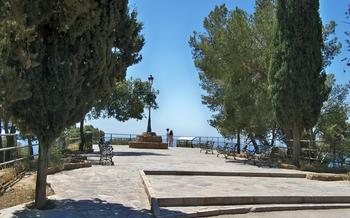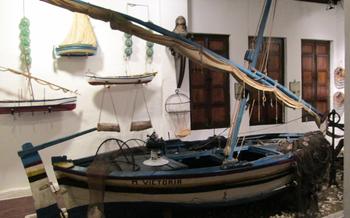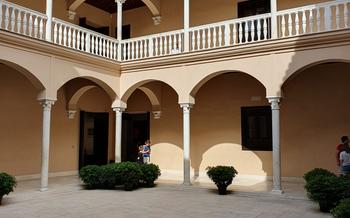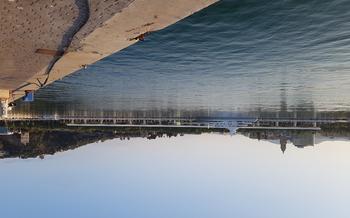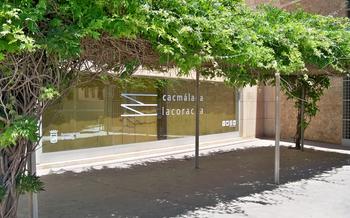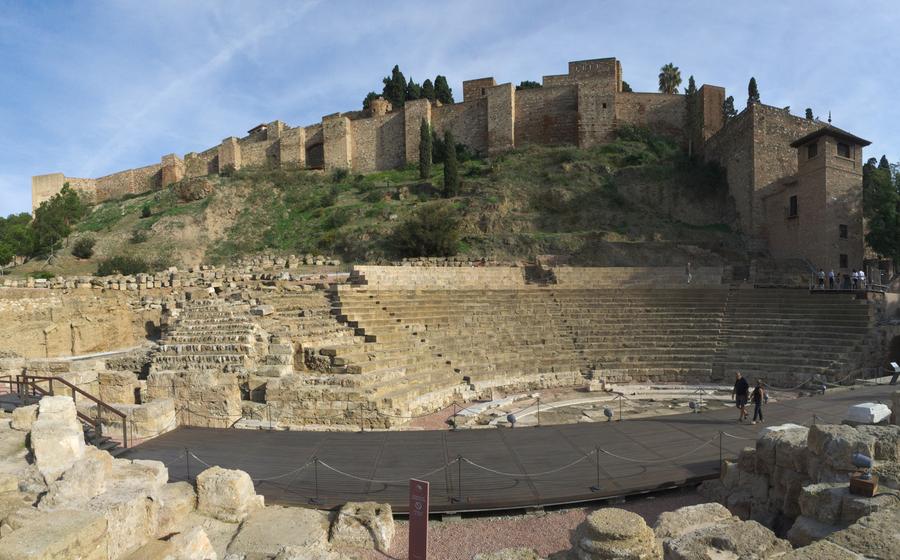
Roman Theatre of Málaga
- A Journey Through Time
- Location and Accessibility
- Guided Tours and Audio Guides
- Opening Hours and Admission Prices
- Exploring the Theatre's Remains
- A Glimpse into the Past: Bringing History to Life
- The Alcazaba and Roman Theatre: A Historic Duo
- The Roman Theatre Museum
- The Roman Theatre Festival
- Photo Opportunities
- Souvenirs and Shopping
- Accessibility for People with Disabilities
- Historical Significance and Impact
- Insider Tip: Unveiling the Secrets of the Roman Theatre
A Journey Through Time
The Roman Theatre of Malaga, a magnificent testament to ancient Roman civilization, invites you on a journey through time. Its origins date back to the 1st century B.C., when the Romans, after conquering the region, sought to establish a permanent presence in Malaga. The theatre, strategically situated at the foot of the Alcazaba fortress, served as a vital center for entertainment and cultural expression. In Roman society, theatres held immense significance, not only as venues for dramatic performances but also as spaces for religious ceremonies, political gatherings, and social interactions. The architectural features of the theatre reflect the grandeur and sophistication of Roman engineering. Its semi-circular seating arrangement, known as the cavea, could accommodate up to 15,000 spectators, offering a panoramic view of the stage. The intricate stage design, with its raised platform and elaborate backdrop, provided a dynamic setting for theatrical productions. Archaeological discoveries at the site, including numerous sculptures, inscriptions, and ceramic fragments, have shed light on the theatre's rich history and artistic significance. These findings offer valuable insights into the daily life and cultural practices of the Roman inhabitants of Malaga, bringing the past vividly to life.
Location and Accessibility
The Roman Theatre of Málaga is conveniently located in the heart of the city, at Calle Alcazabilla, To get there, you can take advantage of the excellent public transportation network. The nearest bus stop is just a short walk away, with several lines connecting to different parts of the city. Alternatively, you can hop on the Malaga Metro and get off at the "El Perchel" station, which is a 5-minute walk from the theatre.
For those arriving by car, there are several parking options nearby. The closest parking garage, "Aparcamiento Alcazaba", is located just across the street, offering convenient and secure parking for a reasonable fee. However, it's important to note that parking spaces in the area can be limited, especially during peak tourist season.
The Roman Theatre is fully wheelchair accessible, with ramps and elevators providing easy access to all areas of the site. Designated parking spaces for visitors with disabilities are also available nearby.
Guided Tours and Audio Guides
The Roman Theatre of Málaga offers guided tours in various languages, providing visitors with an immersive and informative experience. These tours are led by knowledgeable guides who bring the theatre's history and significance to life. Highlights covered during the tours include the theatre's architectural features, archaeological discoveries, and its role in Roman society.
Guided tours are available at specific times throughout the day and can be booked in advance or on-site. Group discounts are available for larger groups, making it an affordable option for families or friends traveling together.
For those who prefer a self-guided experience, the theatre also offers audio guides in multiple languages. These audio guides provide detailed information about the theatre's history, architecture, and archaeological discoveries. Visitors can rent audio guides at the ticket office and explore the theatre at their own pace.
Opening Hours and Admission Prices
The Roman Theatre of Málaga is open to the public, inviting visitors to delve into its ancient allure. Its doors welcome history enthusiasts and culture seekers from Tuesday to Sunday, offering a journey through time. The theatre's operating hours are typically from 10:00 AM to 6:00 PM, providing ample time to explore its ruins and immerse oneself in its grandeur.
Regular admission prices vary depending on the visitor's age and status. Adults seeking to unravel the theatre's secrets can purchase a ticket for 6 euros, while children between the ages of 6 and 16 can embark on this historical adventure for a reduced fee of 3 euros. Seniors, over 65 years of age, also benefit from a discounted rate of 3 euros, ensuring accessibility for all to experience this cultural gem.
For those with a passion for history and a desire to delve deeper into the theatre's significance, guided tours are available at an additional cost. These tours provide an enriching experience, offering insights and anecdotes that bring the theatre's past to life. Advance ticket purchase is recommended to secure your spot on a guided tour and avoid any disappointment. The theatre's website offers a convenient online booking system, allowing visitors to plan their visit seamlessly.
Exploring the Theatre's Remains
The Roman Theatre of Málaga offers visitors the opportunity to explore the remarkably preserved remains of this ancient structure. As you step through the entrance, you'll find yourself in awe of the sheer size and grandeur of the theatre. The stage, with its intricate carvings and decorative elements, is a testament to the skill and artistry of the Roman builders.
The orchestra, once the heart of the theatre, provides an up-close view of the stage and offers a glimpse into the acoustic wonders of the space. The seating areas, though worn by time, still retain their original structure, allowing you to imagine the atmosphere of a performance centuries ago.
Interactive exhibits and displays throughout the theatre enhance the visitor experience. Touchscreens and multimedia presentations provide detailed information about the theatre's history, architecture, and significance. You can learn about the various types of performances that took place here, from plays and concerts to gladiatorial contests.
The stage, orchestra, and seating areas are all accessible to visitors, allowing you to explore every corner of this ancient marvel. Imagine yourself sitting in the audience, surrounded by the buzz of anticipation, as the curtain rises on a captivating performance.
A Glimpse into the Past: Bringing History to Life
To truly step back in time and experience the grandeur of the Roman Theatre of Málaga, visitors can immerse themselves in a variety of engaging activities that bring history to life. Costumed guides or reenactors transport visitors to the era of the Roman Empire, offering a glimpse into the daily lives and customs of the people who once inhabited this iconic site. Historical performances or demonstrations, such as gladiator fights or theatrical productions, recreate the vibrant atmosphere of ancient Rome, providing an unforgettable and immersive experience. The theatre also hosts thematic events or festivals related to Roman culture, allowing visitors to participate in hands-on activities or workshops that showcase traditional crafts, music, and culinary delights of the period. These immersive experiences offer a unique and unforgettable way to connect with the past and gain a deeper understanding of the rich history of the Roman Theatre of Málaga.
The Alcazaba and Roman Theatre: A Historic Duo
The Roman Theatre of Málaga stands in close proximity to another significant historical landmark: the Alcazaba fortress. This imposing structure, built by the Moors in the 11th century, played a crucial role in protecting the city from invaders. Its strategic location, overlooking both the Roman Theatre and the Mediterranean Sea, made it a formidable defensive stronghold. Visitors to the Roman Theatre can purchase a combined ticket that grants them access to both attractions, allowing them to explore the fascinating history of Málaga from two different perspectives.
The Alcazaba, with its well-preserved fortifications, towers, and courtyards, offers a glimpse into the architectural prowess of the Moorish era. Its intricate designs and decorative elements showcase the artistry and craftsmanship of the time. While exploring the Alcazaba, visitors can learn about the struggles and triumphs of the different civilizations that have left their mark on Málaga.
The proximity of the Alcazaba to the Roman Theatre highlights the continuity of history and the layering of cultures that have shaped Málaga's identity. The theatre, built centuries before the Alcazaba, served as a center for entertainment and cultural expression during the Roman period. The fortress, constructed much later, symbolized the city's resilience and its ability to adapt to changing circumstances. Together, these two landmarks stand as testaments to Málaga's rich and diverse past.
The Roman Theatre Museum
Housed within the Roman Theatre complex, the Roman Theatre Museum offers a fascinating glimpse into the history and significance of this ancient site. Step inside to discover a treasure trove of artifacts unearthed during archaeological excavations, including intricate mosaics, sculptures, pottery, and everyday objects that once belonged to the inhabitants of Roman Malaga.
Interactive displays and educational resources bring the past to life, providing insights into the daily lives, customs, and beliefs of the Roman population. Temporary exhibitions and special events delve deeper into specific aspects of Roman culture and history, showcasing unique artifacts and offering a chance to engage with experts in the field.
The Roman Theatre Festival
Every summer, the Roman Theatre of Málaga comes alive with the spirit of the past during the annual Roman Theatre Festival. This vibrant celebration of ancient culture showcases a variety of performances that transport audiences back in time.
From captivating plays and concerts to mesmerizing dance performances, the festival offers a diverse array of entertainment for all ages. The atmosphere is electric as the theatre's historic stage becomes a platform for talented artists to bring Roman history and culture to life.
Attending the Roman Theatre Festival is an unforgettable experience that combines history, art, and entertainment. Whether you're a history buff, a theatre enthusiast, or simply looking for a unique and immersive cultural experience, this festival is not to be missed.
To make the most of your visit, be sure to purchase tickets in advance, especially for popular performances. Choosing the right seats can also enhance your experience, so consider factors such as proximity to the stage and the view of the theatre.
The Roman Theatre Festival is a testament to the enduring legacy of the Roman Empire and its impact on Málaga. It's an opportunity to celebrate the city's rich history and cultural heritage while enjoying world-class performances in a truly unique setting.
Photo Opportunities
The Roman Theatre of Málaga offers ample opportunities for capturing stunning photographs that will serve as lasting memories of your visit. To make the most of your photo session, consider the following tips:
- Best Angles and Spots:
- For a panoramic view of the theatre, head to the upper seating rows or the Alcazaba fortress, which offers a bird's-eye perspective.
- To capture the grandeur of the stage and orchestra, stand in the center of the theatre and shoot towards the front.
-
For close-up shots of architectural details, explore the various sections of the theatre, including the columns, arches, and sculptures.
-
Lighting Conditions:
- The best time for photography is early morning or late afternoon when the light is soft and golden, creating a warm ambiance.
-
Avoid midday when the sun is directly overhead, as this can result in harsh shadows and overexposed images.
-
Natural Light and Shadows:
- Utilize natural light to your advantage. Position yourself in a way that the light falls on the front of the theatre, illuminating the intricate details.
-
Be mindful of shadows, especially when shooting during the middle of the day. Use your body or a reflector to block or diffuse the light, creating a more balanced exposure.
-
Photography Restrictions:
- Flash photography is not permitted inside the theatre to preserve the integrity of the artifacts and prevent damage to the exhibits.
- Tripods are generally not allowed, as they can obstruct the flow of visitors and damage the delicate flooring.
Souvenirs and Shopping
As you wander through the Roman Theatre, you'll notice a small gift shop tucked away in one of the corners. This charming shop is a treasure trove of souvenirs and mementos related to the theatre and Roman culture. From replicas of ancient coins to miniature sculptures of gladiators, you'll find something to remind you of your visit to this historic site.
In addition to the gift shop, you'll also find local artisans and vendors selling their crafts in the surrounding area. These talented individuals create beautiful and unique items inspired by Roman culture and Malaga's rich history. You can find everything from intricate jewelry and pottery to hand-woven textiles and leather goods.
By supporting local artisans, you not only take home a unique souvenir but also contribute to the preservation of traditional crafts and skills. So, as you explore the Roman Theatre, be sure to set aside some time to browse the gift shop and support the local artisans who keep Malaga's cultural heritage alive.
Accessibility for People with Disabilities
The Roman Theatre of Málaga is committed to ensuring accessibility for all visitors, including those with disabilities. Wheelchair users can easily navigate the entire theatre complex, as ramps and elevators have been installed to provide barrier-free access. Designated parking spaces are available nearby for visitors with disabilities, and assistance is provided to ensure a smooth and enjoyable experience. The theatre staff is knowledgeable and accommodating, providing information and assistance to visitors with disabilities. Special events and programs are also organized to cater to the needs of people with disabilities, ensuring that everyone has the opportunity to learn about and appreciate this historical landmark.
Historical Significance and Impact
The Roman Theatre of Málaga played a pivotal role in shaping the city's history and culture. During the Roman era, the theatre served as a vibrant hub for entertainment, performances, and social gatherings. It brought together citizens from all walks of life, fostering a sense of community and cultural exchange. The theatre's presence contributed to Malaga's reputation as a significant Roman city, attracting visitors and trade from across the empire.
The impact of Roman rule on Málaga was profound. The Romans introduced advanced engineering and architectural techniques, leaving behind a legacy of well-preserved monuments, including the theatre. They also established a system of governance and infrastructure that laid the foundation for Malaga's future development. Ongoing research and archaeological projects continue to uncover new insights into the theatre and its role in Malaga's Roman past.
Preserving and protecting cultural heritage is of utmost importance for Malaga. The Roman Theatre stands as a testament to the city's rich history and cultural diversity. It serves as a reminder of the enduring legacy of the Roman Empire and its influence on Malaga's identity. By safeguarding and promoting this iconic landmark, Malaga celebrates its heritage and ensures that future generations can appreciate and learn from this remarkable piece of antiquity.
Insider Tip: Unveiling the Secrets of the Roman Theatre
Beyond the main attractions and well-known features of the Roman Theatre, there are hidden gems and unique experiences waiting to be discovered. For history enthusiasts, one insider tip is to explore the theatre's underground chambers, where ancient artifacts and remnants of the original stage machinery are still visible. These hidden spaces offer a glimpse into the behind-the-scenes workings of the theatre and provide a deeper understanding of its operation during Roman times.
For those seeking a more immersive experience, guided tours led by costumed actors or reenactors are available. These tours bring the theatre's history to life, allowing visitors to step back in time and imagine the vibrant atmosphere of Roman performances. The actors provide insights into the lives of Roman citizens, gladiators, and performers, creating a memorable and educational experience.
